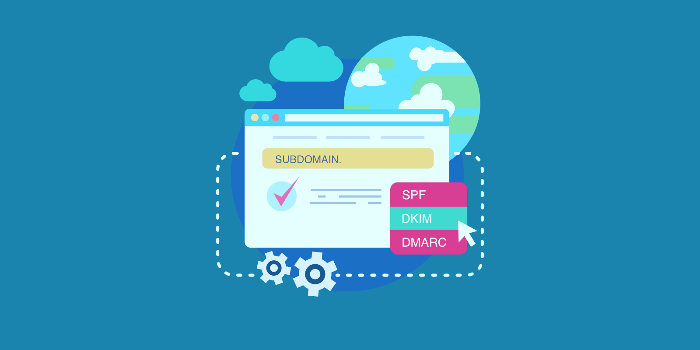Email, the backbone of modern communication, relies heavily on trust. We trust that the emails we receive are from legitimate sources and that our own emails reach their intended recipients without being tampered with. Enter DKIM or DomainKeys Identified Mail, a cryptographic authentication method that acts as a digital seal of trust for email. In this blog post, we'll dive into the world of DKIM, exploring what it is, how it works, its importance, and how it enhances the security and integrity of your email communication.
Understanding DKIM
DomainKeys Identified Mail (DKIM) is an email authentication method that allows the sender to digitally sign their emails. This digital signature is then verified by the recipient's email server to confirm that the email is indeed from the claimed sender and that it hasn't been altered during transit.
How DKIM Works
Here's a simplified overview of how DKIM works:
- Sender Signs the Email: When the sender sends an email, their email server generates a unique cryptographic signature using their private key. This signature is added to the email's header.
- Recipient's Server Verification: When the recipient's email server receives the email, it queries the sender's DNS (Domain Name System) records to retrieve the public key associated with their domain.
- Signature Verification: The recipient's server uses the sender's public key to decrypt and verify the signature in the email's header. If the signature matches the email's content and hasn't been tampered with, it's considered valid.
- Pass or Fail: Based on the DKIM verification, the recipient's server marks the email as either verified (pass) or suspicious (fail).
The Importance of DKIM
DKIM offers several key benefits:
- Authentication: DKIM authenticates the sender, ensuring that the email is genuinely from the claimed source.
- Integrity: It verifies that the email hasn't been altered during transit, maintaining its integrity.
- Anti-Spoofing: DKIM helps prevent email spoofing, where attackers forge sender addresses to deceive recipients.
- Improved Deliverability: Emails with valid DKIM signatures are more likely to reach the inbox rather than being flagged as spam.
- Reputation Management: DKIM can improve your email sender reputation, ensuring that your legitimate emails are trusted.
Implementing DKIM
To implement DKIM for your domain, follow these steps:
- Generate Key Pair: Generate a cryptographic key pair (public and private keys) for your domain. Many email service providers offer tools to assist with this.
- Publish Public Key: Publish your domain's public key in your DNS records as a DKIM record. This is done by creating a TXT record in your DNS zone.
- Sign Outgoing Emails: Configure your email server to sign outgoing emails with the private key.
- Testing and Monitoring: Test your DKIM setup and monitor email delivery to ensure that DKIM-signed emails are being successfully authenticated by recipients.
Conclusion
In a digital landscape where email-based threats and cyberattacks are prevalent, DKIM stands as a crucial line of defense. It authenticates the sender, ensures email integrity, and guards against spoofing. By implementing DKIM for your domain, you not only enhance the security of your email communication but also bolster your reputation as a trustworthy sender. In a world where trust is paramount, DKIM serves as a digital seal of authenticity for your email messages, ensuring they reach their recipients unaltered and unspoofed.

Comments
Post a Comment